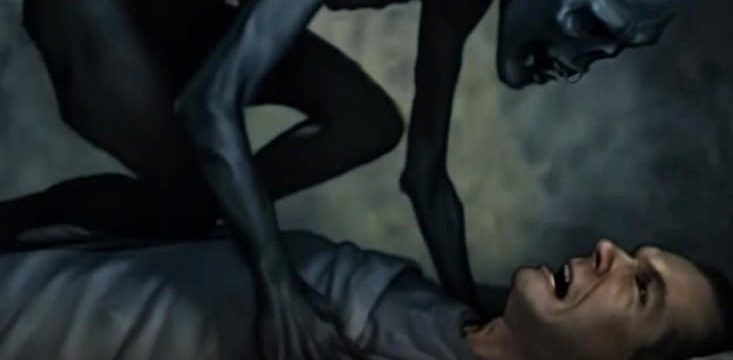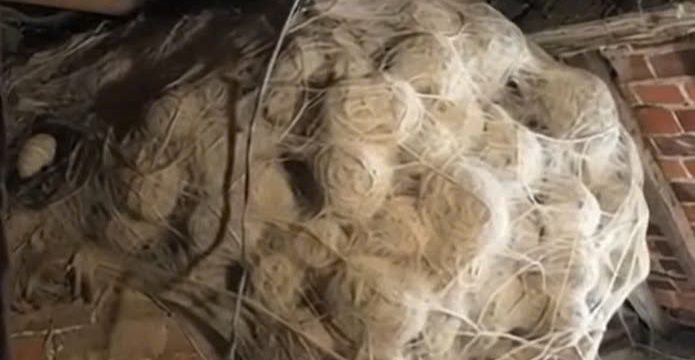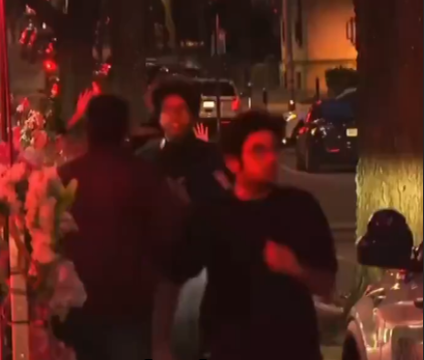Imagine preparing for a peaceful night’s sleep, only to realize you’ve been unknowingly sharing your space with some uninvited guests. That’s exactly what happened to one woman who discovered a wasp nest hidden right beneath her bed. The mere thought of wasps buzzing just inches away while you sleep is enough to send chills down anyone’s spine.

Wasp nests can appear in the most unexpected places, and finding one inside your home is unsettling. While wasps typically prefer outdoor spaces like trees, under eaves, or sheltered corners, they sometimes seek warmth and quiet in more concealed indoor spots. Basements, attics, wall cavities, and even beneath furniture can become appealing nesting locations. Since these insects naturally gravitate toward small crevices and hidden spaces, any tiny opening leading into your home can serve as their entryway.
For most people, the idea of sleeping so close to a colony of wasps is terrifying. While wasps are generally not aggressive unless provoked, their presence indoors increases the risk of an accidental disturbance. Something as simple as shifting in bed or knocking over an object could send vibrations through their fragile nest, making them feel threatened. Unlike bees, which sting once and die, wasps can sting multiple times, making them a particularly intimidating presence in a home.
If you ever discover a wasp nest inside your home, knowing how to handle the situation safely is crucial. Acting impulsively or panicking can lead to unnecessary danger. Instead, staying calm and following proper precautions can help prevent injury and allow for an effective resolution. Here are some essential steps to take:
First and foremost, remain calm. Wasps are highly reactive to sudden movements and perceived threats. If you start flailing or moving erratically, you may provoke them into defensive behavior. Take a deep breath, move slowly, and avoid making any loud noises. The less disturbed they feel, the less likely they are to react aggressively.
Next, keep a safe distance. As tempting as it may be to inspect the nest, it’s best to stay as far away as possible. Wasps have strong territorial instincts and will defend their home if they sense an intruder. Maintaining distance not only protects you from painful stings but also gives you time to assess the situation and determine the best course of action.
Avoid touching or disturbing the nest under any circumstances. Even if it looks small or inactive, it could be housing dozens—or even hundreds—of wasps. Attempting to remove it yourself could trigger an aggressive swarm, which can be particularly dangerous indoors, where escape routes are limited. While some may consider using chemical sprays or other DIY methods, this is not recommended unless you have experience dealing with wasps. A single mistake can quickly escalate into a hazardous situation.
The safest and most effective way to handle a wasp nest is to call a professional. Pest control experts have the necessary equipment, protective gear, and knowledge to remove the nest without causing harm to you, your home, or even the wasps themselves. Many exterminators use humane removal techniques, relocating the colony instead of exterminating it when possible. Trusting professionals ensures the problem is dealt with thoroughly and reduces the risk of future infestations.
Once the nest has been safely removed, taking steps to prevent future invasions is essential. Wasps often return to familiar nesting spots, so implementing preventative measures can keep them from coming back. Start by inspecting your home for gaps, cracks, or holes that could serve as entry points. Seal any openings around windows, doors, vents, and other access areas. Ensuring attics, basements, and crawl spaces are properly sealed and ventilated can also help deter unwanted guests.
Additionally, be mindful of storage areas like garages, sheds, and spare rooms. These spaces, often left undisturbed for long periods, can become attractive to wasps looking for a secure place to nest. Regularly inspecting these areas, particularly in warmer months when wasps are most active, can help you spot early signs of an infestation before it becomes a significant problem.
To further discourage wasps from settling near your home, eliminate potential food sources. Wasps are particularly attracted to sugary substances, so be careful where you place outdoor food, drinks, or garbage. Secure trash bins with tight-fitting lids, clean up spills immediately, and avoid leaving uncovered sweet beverages outside. If you have fruit trees or flowering plants near your home, regularly remove fallen fruit to prevent wasps from gathering.
For those who spend time outdoors, particularly in gardens or patios, wasp deterrents can be beneficial. Some homeowners have success using natural repellents like mint, citronella, or eucalyptus plants, which are known to deter wasps. Others opt for commercial wasp traps that lure them away from high-traffic areas.
While finding a wasp nest inside your home can be alarming, it’s important to remember that the situation can be managed safely. By staying calm, keeping your distance, and calling a professional, you can ensure that both you and the wasps remain unharmed. After removal, securing your home and taking preventive measures will give you peace of mind and help prevent future infestations.
Ultimately, wasps are simply following their instincts, seeking the safest place to build their nests. While they may not have intended to invade your space, handling the situation responsibly and effectively is crucial. With awareness and preventative actions, you can keep your home wasp-free and enjoy a safer, more comfortable living environment.





